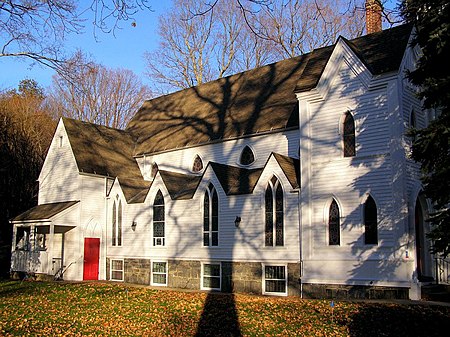Pine Meadow Historic District
Federal architecture in ConnecticutGreek Revival architecture in ConnecticutHistoric districts in Litchfield County, ConnecticutHistoric districts on the National Register of Historic Places in ConnecticutNRHP infobox with nocat ... and 4 more
National Register of Historic Places in Litchfield County, ConnecticutNew Hartford, ConnecticutQueen Anne architecture in ConnecticutUse mdy dates from August 2023

The Pine Meadow Historic District encompasses most of the historic 19th-century village of Pine Meadow in New Hartford, Connecticut. Located at a bend in the West Branch of the Farmington River southeast of New Hartford center, it is a well-preserved example of a rural industrial village. The district was listed on the National Register of Historic Places in 1996.
Excerpt from the Wikipedia article Pine Meadow Historic District (License: CC BY-SA 3.0, Authors, Images).Pine Meadow Historic District
Church Street,
Geographical coordinates (GPS) Address Nearby Places Show on map
Geographical coordinates (GPS)
| Latitude | Longitude |
|---|---|
| N 41.875277777778 ° | E -72.967777777778 ° |
Address
Church Street 55
06057
Connecticut, United States
Open on Google Maps









